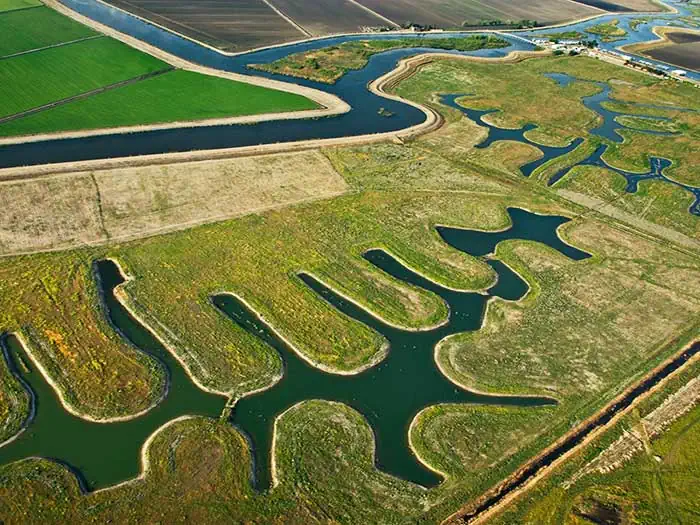


Taking a Critical Step Towards Net Zero Emissions Using Carbon Sequestration
The picturesque California Delta, often referred to as the Sacramento-San Joaquin Delta, is emerging as a geological sweet spot in California’s ambitious journey toward reaching net zero carbon emissions. Its unique geology presents a compelling case for carbon sequestration, an essential strategy in the battle against climate change. Recent developments, including a collaborative effort between SCS and Lawrence Livermore National Laboratory (LLNL) on a Class VI permit application for Pelican Renewables – a company formed by Delta landowners and residents to pursue geologic storage – are indicative of the region’s growing importance in California’s carbon mitigation strategy.
Geological Foundations of Carbon Sequestration in the California Delta
The California Delta, often referred to as the Sacramento-San Joaquin Delta, is a vast inland delta formed by the confluence of the Sacramento and San Joaquin rivers and their tributaries as they meet the waters of the San Francisco Bay. Its unique geology makes it an ideal candidate for carbon sequestration:
California’s Net Zero Carbon Goal and Carbon Sequestration in the Delta
California has set an ambitious goal to achieve net zero carbon emissions by 2045, a milestone in the fight against climate change. Achieving this objective necessitates reducing emissions and actively removing and storing carbon from the atmosphere. Carbon sequestration in the California Delta can play a pivotal role in this endeavor. The Delta’s geological potential aligns seamlessly with the state’s commitment to sustainable practices and environmental responsibility.
Collaborative Efforts: SCS and LLNL’s Support for Pelican Renewables’ Class VI Permit Application
The collaboration between SCS Engineers and Lawrence Livermore National Laboratory (LLNL) that supported geologic characterization, modeling, and CO2 injection simulation for Pelican Renewables’ injection well application underscores the importance of pursuing carbon sequestration in the California Delta. The Class VI permit application underlines Pelican’s commitment to conducting carbon capture and storage (CCS) activities with the highest safety and environmental standards. This initiative is a testament to the growing synergy between scientific research and private enterprise in addressing climate challenges.
References and Further Reading
For a deeper dive into California’s carbon removal options for reaching net zero, “Getting to Neutral” by LLNL is a valuable resource. This publication outlines the various strategies and technologies under research to achieve California’s ambitious carbon reduction goals, including carbon sequestration in regions like the California Delta. The most recent “Scoping Plan” by the California Air Resources Board – the state’s policy blueprint for achieving its climate goals – underscores the need to capture and store CO2 from large sources and the atmosphere.
Our Conclusions
The California Delta’s geological attributes make it an attractive destination for carbon sequestration, a critical component in California’s mission to achieve net zero carbon emissions. Collaborative endeavors like SCS’s ongoing partnership with LLNL and Pelican Renewables highlight the commitment to responsible carbon capture and storage practices. As we continue to innovate and harness the potential of our natural surroundings, the California Delta’s role in addressing climate change becomes increasingly evident and essential.
Carbon Sequestration Considerations & Resources
